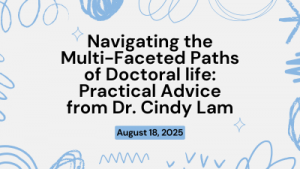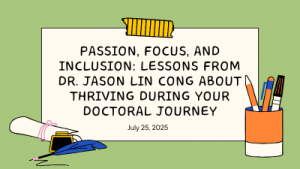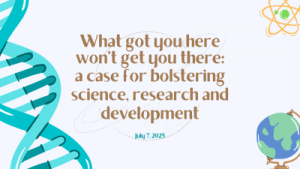Ibrar Bhatt, Queen’s University Belfast, UK
This post offers an overview that aligns with Ibrar’s lecture at HKU (May 14), titled “Heritage Literacy in the Lives of Chinese Muslims: A Semiotic Study”. Ibrar is the author of “A Semiotics of Muslimness in China” (CUP) and is currently working on the book “Heritage Literacy in the Lives of Chinese Muslims” (Bloomsbury). He visited Hong Kong throughout April-May 2024 to collect data for his current project which examines heritage literacy in Hong Kong’s Muslim communities.

Conceptualising Heritage Literacy
Through my work on Sino-Muslim heritage literacy (see Bhatt 2023; Bhatt & Wang 2023), I have attempted to theorise the concept of ‘heritage literacy’ as a critical and complementary line of inquiry alongside studies of ‘heritage education’ and ‘heritage language’, both of which are used extensively in Hong Kong SAR. I conceptualise heritage literacy as a sociosemiotic construct deeply embedded in everyday practices related to heritage. It is a framework that acknowledges the interconnectedness of literacy practices in everyday life and community history and, therefore, as integral components of heritage. Heritage literacy practices draw their sociosemiotic significance from diverse and often unexpected domains, such as art, religion, ethnicity, food consumption, trade, and community history, thus complementing conventional approaches to religious literacy and heritage studies.
In terms of methods, heritage literacy cannot be easily recognised or understood without a commitment to ethnographic or auto-ethnographic inquiry. Such approaches help us appreciate the context-specific and multifaceted nature of heritage literacy, as well as the various social practices and material actors which help shape it. My study therefore adopted methods such as walk-along interviews, narrative interviews, a collection of literacy artefacts (including art work and notebooks), and observations of key events (meditation, calligraphy and Kung Fu lessons)
In historical Muslim contexts, heritage and religious literacy were often influenced by commercial conditions. For instance, Brian Street’s (1985) work on ‘maktab literacy’ demonstrated how specific literacy features enabled adaptation to commercial literacy. However, this dynamic could operate in reverse, with commercial and workplace literacy fostering religious and heritage practices.
Sino-Muslim Heritage Literacy
The relationship between trade and literacy practices is evident in key historical hubs along the ancient Silk Road, such as Lanzhou, Xining, and Xi’an. These cities possess rich heritage literacy rooted in trade and commerce practices. As Muslim traders came to China and penned the names of places and personal names in Arabic, in transliterated form, writing systems such as “xiǎo jīng” (小经) emerged. This orthographic exchange involved transliterating the Chinese language using Arabic script, or ‘Pinyin with Arabic’, eventually evolving into a system used for community correspondence and religious education.
Sinophone Muslims do not have a distinct minority language through which their religious heritage can be ring-fenced and protected. As a result, heritage literacy practices are continually negotiated and adapted, encompassing new expressions of everyday Muslimness. Heritage literacy, therefore, becomes a dynamic, evolving process rather than a static preservation of heritage as a fixed mould of cultural production. It is always a conversation between the past, the present, and the evolving realities of social practice which I refer to as ‘everyday heritaging’ (Bhatt & Wang 2023).
Heritage Education & Heritage Language
Heritage literacy can greatly benefit researchers by enhancing related fields like heritage education and heritage language. Heritage education often adopts a top-down approach to cultural production, focusing on heritage maintenance. My research diverges from this perspective by exploring heritage ‘in the wild’, emphasising everyday social, heritage, and religious activities. In this way, heritage literacy contributes to heritage education by highlighting how heritage is actively constructed and negotiated in daily life.
Work on heritage language tends to emphasise language as the sole manifestation of heritage, sometimes overlooking broader heritage practices that span multiple modalities. Heritage literacy is not confined to a particular language but instead recognises the fluidity and adaptability of literacy practices in diverse cultural contexts. The concept of ‘everyday heritaging’ emerges as a valuable lens through which to understand the dynamic interplay between heritage, literacy, and social life.
Implications for Future Research
My current project with Muslim communities in Hong Kong exemplifies how heritage literacy practices evolve and adapt in multicultural settings. My current data collection shows that these practices encompass a wide range of languages, including Indonesian, Urdu, Arabic, Mandarin, Cantonese, English and Tamil, a sociolinguistically compelling phenomenon that requires deep exploration. Each of these lingua francas are present in small spaces of worship and co-exist in everyday practice. Studying literacy practices rooted in heritage provides insights into the everydayness of heritage and its vernacular character.
Furthermore, the Greater Bay Area (GBA), with its vibrant hubs for the movement of people and goods, presents a unique entry point for studying evolving heritage literacy practices. China’s 1-Belt-1-Road project further highlights the importance of examining the relationship between heritage literacy, movements of people, and trade. The emergence of the GBA as a commercial hub provides a contemporary parallel to the ancient Silk Road, as new and settled communities contribute to the evolving sociolinguistic landscapes connected to heritage.



